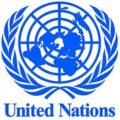 A historic global agreement was reached at the United Nations headquarters in New York on Friday, July 7, 2017 when 122 nations adopted a treaty to ban nuclear weapons. Known officially as the Treaty on the Prohibition of Nuclear Weapons, it will acquire legal force once 50 nations have signed and ratified it.
A historic global agreement was reached at the United Nations headquarters in New York on Friday, July 7, 2017 when 122 nations adopted a treaty to ban nuclear weapons. Known officially as the Treaty on the Prohibition of Nuclear Weapons, it will acquire legal force once 50 nations have signed and ratified it.
All countries that possess nuclear arms and many others that either come under their protection such as Australia or host weapons on their soil boycotted the negotiations. Only the Netherlands, which took part in the discussion despite hosting US nuclear weapons, voted against the treaty.
States that are party to the treaty undertake to never:
- Develop, test, produce, manufacture, otherwise acquire, possess or stockpile nuclear weapons or other nuclear explosive devices;
- Transfer to any recipient whatsoever nuclear weapons or other nuclear explosive devices or control over such weapons or explosive devices directly or indirectly;
- Receive the transfer of or control over nuclear weapons or other nuclear explosive devices directly or indirectly;
- Use or threaten to use nuclear weapons or other nuclear explosive devices;
- Assist, encourage or induce, in any way, anyone to engage in any activity prohibited to a State Party under this Treaty;
- Seek or receive any assistance, in any way, from anyone to engage in any activity prohibited to a State Party under this Treaty;
- Allow any stationing, installation or deployment of any nuclear weapons or other nuclear explosive devices in its territory or at any place under its jurisdiction or control.1
States that own, possess or control nuclear weapons or other nuclear explosive devices may join the treaty so long as they immediately remove them from operational status, and destroy them in accordance with a legally binding, time-bound plan.
In addition, states that have any nuclear weapons or other nuclear explosive devices on its territory that are owned, possessed or controlled by another state may join the treaty so long as they remove such weapons by a specified deadline to be determined at the first meeting of signatory states.
The treaty provides for victim assistance and environmental remediation resulting from nuclear weapons use and the two-thousand-plus nuclear test explosions that have been conducted around the world since 1945.
Prior to the treaty being adopted, nuclear weapons were the only weapons of mass destruction not subject to a comprehensive ban, despite their catastrophic, humanitarian and environmental consequences.
Beatrice Fihn, Executive Director of International Campaign to Abolish Nuclear Weapons (ICAN), noted that the treaty follows other international agreements banning weapons of mass destruction: “We banned biological weapons 45 years ago, we banned chemical weapons 25 years ago, and today we are banning nuclear weapons.” She anticipated that the treaty could have the 50-state ratifications that it needs to enter into international law within two years.2
Previous UN treaties have been effective even when key nations have refused to sign up to them. For example the US did not sign up to the Mine Ban Treaty, but has now adjusted its landmines policy in the light of this treaty. “These kinds of treaties have an impact that forces countries to change their behaviour. It is not going to happen fast, but it does affect them,” Fihn said. With respect to previous weapons treaties, “prohibition came first, and then elimination. This is taking the first step towards elimination,” she said.3
The treaty is permanent in nature and will be open for signature to all member states of the United Nations as from 20 September 2017.4
Notes
1. United Nations, Treaty on the Prohibition of Nuclear Weapons, New York, Jul 7, 2017.
2 & 3. Beatrice Fihn quoted in Ian Sample, ‘Treaty banning nuclear weapons approved at UN’, The Guardian, Jul 8, 2017. Note that the Mine Ban Treaty is formally known as the Convention on the Prohibition of the Use, Stockpiling, Production and Transfer of Anti-Personnel Mines and on their Destruction. It is also known as the Ottawa Treaty or the Anti-Personnel Mine Ban Convention. This treaty was signed on December 3, 1997 and came into effect on March 1, 1999.
4. For more information refer to Tim Wright, ‘Celebration as UN adopts historic nuclear weapons ban’, Bulletin of the Atomic Scientists, Jul 10, 2017.